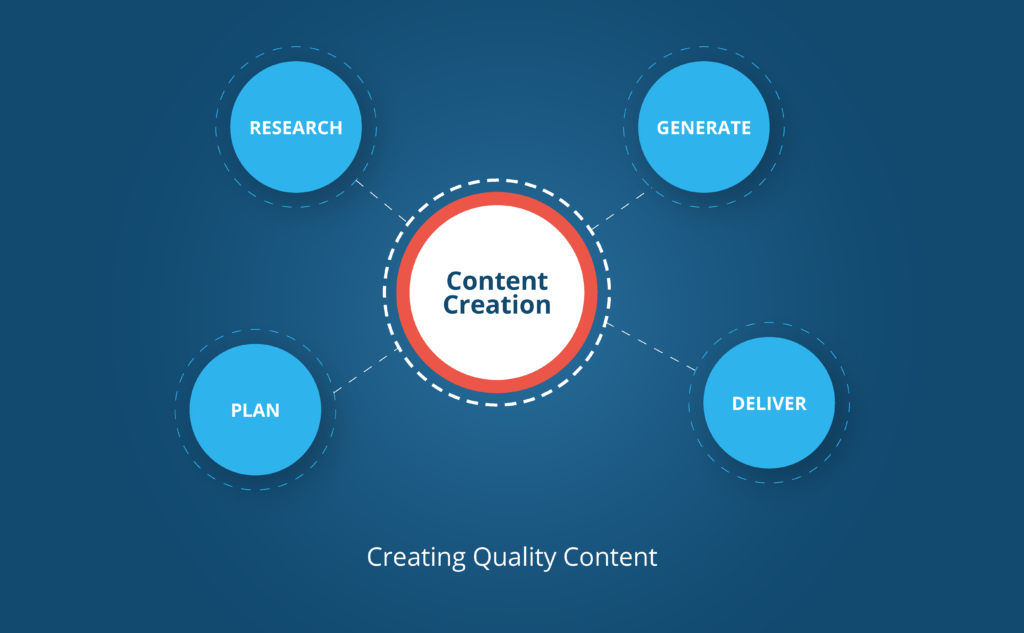
As a professional publisher, you are aware that in order to grow your business and reach more readers, you need to generate leads. However, lead generation can be a complex and time-consuming process, especially in the digital age where competition is fierce. This is where having a solid lead generation strategy comes into play.
In this ultimate guide, we will walk you through the process of generating leads, from the necessary knowledge and skills to the tools and platforms you can use, and how lead generation can benefit your online publication.
Whether you are a seasoned professional or just starting out, this guide will provide you with valuable insights and tips to help you succeed in lead generation.
What is lead generation?

Lead generation is the process of identifying and attracting potential customers for your business or product.
In the case of online publishers, lead generation involves attracting potential readers who are interested in your content and are likely to become loyal followers of your publication. This is done by creating and sharing valuable content, optimizing your website for search engines, and using social media and other platforms to reach and engage with your target audience.
The ultimate goal is to convert these leads into paying subscribers or customers, who will help you grow your business and revenue over time. By implementing a successful lead generation strategy, you can increase your online presence, build your brand, and ultimately achieve your business goals.
The importance of lead generation for online professional publishers
Lead generation is crucial for online professional publishers for several reasons.
Firstly, it helps to increase the visibility and reach of your publication, enabling you to attract a larger audience and build brand awareness.
Secondly, generating leads enables you to identify and target potential customers who are more likely to become loyal subscribers or followers of your publication. This, in turn, can help to increase your revenue and profitability over time.
Another key benefit of lead generation is that it allows you to build relationships with your audience by providing them with valuable content and engaging with them on a regular basis.
This can help to establish trust and credibility with your readers, which can be invaluable for building a loyal following and boosting your online reputation.
Ultimately, lead generation is essential for online professional publishers who want to stay competitive and grow their business in the digital age. By implementing a successful lead generation strategy, you can attract more readers, build your brand, and achieve your business goals with greater ease and efficiency.
Understanding Your Target Audience

Before you start implementing your lead generation strategy, it’s essential to understand your target audience. Who are they, what are their interests, and what motivates them to read your publication? Understanding your audience will help you create content that resonates with them and tailor your lead generation approach to their needs.
One effective way to understand your audience is to conduct market research. This can include surveying your current readers, analyzing website traffic data, and researching industry trends and demographics. By doing so, you can identify patterns and preferences that can inform your content creation and lead generation tactics.
Once you have a clear understanding of your target audience, you can start developing your lead generation strategy. This may include creating valuable content, optimizing your website for search engines, and leveraging social media and other platforms to reach and engage with your audience. With the right approach and tools, you can effectively generate leads and grow your online publication.
Creating customer personas
Creating customer personas is a helpful way to understand your target audience better. Customer personas are fictional representations of your ideal readers based on real data and insights. By creating these personas, you can better understand their needs, pain points, and behaviors, which can inform your content creation and lead generation efforts.
Another important aspect of understanding your target audience is identifying their journey towards becoming a subscriber or follower. This journey typically involves several stages, including awareness, consideration, and decision. By mapping out this journey, you can create content and lead generation tactics that address each stage and help move your audience towards becoming loyal subscribers.
Identifying their needs and pain points
is crucial in creating valuable content that resonates with your target audience. This can include conducting keyword research to identify popular topics and questions related to your industry, as well as analyzing your website and social media analytics to see which types of content perform best. By creating content that addresses your audience’s needs and pain points, you can establish yourself as a trusted source of information and build a loyal following.
In addition to creating valuable content, optimizing your website for search engines is another important aspect of lead generation. This includes optimizing your website structure, meta tags, and content for relevant keywords, as well as ensuring your website is mobile-friendly and has fast loading speeds. By making your website easy to navigate and find via search engines, you can attract more organic traffic and generate more leads.
Creating Quality Content

Creating high-quality content is essential for lead generation in online publishing. Your content should be informative, engaging, and relevant to your target audience. It should also be visually appealing and easy to read. Consider using visual aids such as images and videos to break up your text and make it more engaging.
Another important factor in creating quality content is consistency. Regularly publishing new content shows your audience that you are active and committed to providing them with valuable information. This can also help improve your website’s search engine rankings, making it more visible to potential leads.
Promoting your content through social media and other platforms is essential for successful lead generation. Share your content with your followers and encourage them to share it with their networks. This can help increase your visibility and attract more leads to your website.
Importance of creating valuable content
Creating valuable content is crucial for lead generation in online publishing. It helps establish you as a trusted source of information and builds a loyal following. By identifying your audience’s needs and pain points, you can create content that addresses their concerns and offers solutions. This can include conducting keyword research and analyzing your website and social media analytics to identify popular topics and questions related to your industry.
In addition, optimizing your website for search engines is important for attracting more organic traffic and generating more leads. This includes optimizing your website structure, meta tags, and content for relevant keywords, as well as ensuring your website is mobile-friendly and has fast loading speeds. By making your website easy to navigate and find via search engines, you can attract more potential leads and increase your chances of converting them into loyal subscribers.
Types of content that resonates with your audience
When it comes to creating content that resonates with your target audience, there are several formats to consider.
Blog posts, articles, and whitepapers are great for providing in-depth information on a particular topic. Infographics and videos, on the other hand, are great for breaking down complex information into digestible formats that are easy to understand and share. Consider conducting surveys or interviews with industry experts to provide unique insights and perspectives on your topic.
Another important factor to consider is the tone and style of your content. Your tone should be professional and authoritative, but also approachable and engaging. Use language that is easy to understand and avoid using jargon or technical terms that may alienate your audience. Finally, make sure your content is well-organized and easy to navigate, with clear headings and subheadings that guide your readers through the information.
Tips for creating engaging content
Now that you understand the importance of creating valuable content, let’s dive into some tips for creating engaging content that resonates with your audience. First, focus on telling a story. People are naturally drawn to stories, so try to weave a narrative into your content that captivates your readers. This can be done by using anecdotes, case studies, or personal experiences.
Second, use visuals to enhance your content. As mentioned earlier, infographics and videos are great for breaking down complex information, but even simple images can make your content more engaging. Use high-quality images that are relevant to your topic and break up your text with graphics and diagrams.
Third, don’t be afraid to inject some personality into your content. Your audience wants to connect with a real person, not a faceless corporation. Use humor, wit, or personal anecdotes to make your content more relatable and engaging.
Lastly, be consistent with your content creation. Your audience will come to expect a certain level of quality and frequency from you, so make sure you are delivering on both. Whether you choose to publish weekly blog posts or monthly whitepapers, stick to your schedule and keep your content fresh and relevant.
Creating valuable and engaging content is crucial for lead generation in online publishing. By understanding your audience’s needs and pain points, optimizing your website for search engines, and creating content that resonates with your readers, you can attract and convert more leads into loyal subscribers.
Leveraging Social Media
Social media platforms provide a wide range of opportunities for online publishers to generate leads. With billions of active users, social media platforms give publishers the chance to connect with potential readers on a massive scale. Here are some tips for leveraging social media to generate leads:
1. Identify the right platforms: Not all social media platforms are created equal. Each platform has its own unique audience and style, so it’s important to identify the ones that align with your target audience. For example, if you’re targeting a B2B audience, LinkedIn may be the best platform to focus on.
2. Optimize your profiles: Your social media profiles should be optimized to attract leads. This means using high-quality images, writing compelling descriptions, and including links to your website and other online platforms.
3. Share valuable content: Social media users are looking for valuable content that informs, entertains, or inspires them. Share your own content as well as industry news, tips, and other relevant information to keep your followers engaged.
4. Use hashtags: Hashtags help make your content more discoverable on social media. Research popular hashtags in your industry and use them in your posts to attract more leads.
5. Engage with your audience: Social media is a two-way conversation. Engage with your followers by responding to comments, asking questions, and starting conversations. This helps build relationships with potential leads and encourages them to become loyal subscribers.
By using social media to generate leads, online publishers can increase their reach and connect
Utilizing Email Marketing
Email marketing is another effective way to generate leads for your online publication. By collecting email addresses from your subscribers, you can send them targeted and personalized emails that encourage them to engage with your content and become loyal customers. Here are some tips for utilizing email marketing:
1. Build a targeted email list: Collect email addresses from your subscribers and segment them based on their interests and behaviors. This will allow you to send targeted emails that are relevant and personalized to each subscriber.
2. Use attention-grabbing subject lines: Your subject line is the first thing your subscribers will see in their inbox. Use attention-grabbing language and clear messaging to entice them to open your email.
3. Personalize your emails: Use the subscriber’s name and other relevant information to personalize your emails. This will make them feel valued and increase the chances of them engaging with your content.
4. Provide value in your emails: Your emails should provide value to your subscribers. This could be in the form of exclusive content, discounts, or relevant industry news.
5. Include clear CTAs: Your emails should include clear CTAs that encourage your subscribers to take action, such as visiting your website, downloading an ebook, or subscribing to a premium content plan.
By implementing a targeted and personalized email marketing strategy, online publishers can generate leads and build relationships with their subscribers. Don’t forget to track and analyze your email campaign data to optimize your strategy over time.
Tools and Platforms for Generating Leads
There are a variety of tools and platforms that online publishers can use to generate leads. Here are some of the most popular options:
1. Lead magnets: A lead magnet is an incentive that you offer to potential leads in exchange for their contact information. This could be a free ebook, webinar, or white paper. These lead magnets can be promoted on your website, through social media, and in your email campaigns.
2. Landing pages: A landing page is a standalone web page that is designed to capture a visitor’s contact information. These pages typically have a clear and concise message with a call to action (CTA) that encourages visitors to give their contact information.
3. Social media ads: Social media platforms like Facebook, Instagram, and Twitter offer targeted advertising options that allow you to reach potential leads based on their interests, behaviors, and demographics.
4. Google Ads: Google Ads is a popular advertising platform that allows you to target potential leads based on their search queries, interests, and location.
5. CRM software: Customer Relationship Management (CRM) software helps you manage your leads and track their interactions with your brand. This software can help you segment your leads, personalize your communications, and optimize your lead generation strategy.
By using these tools and platforms in conjunction with a targeted lead generation strategy, online publishers can effectively grow their audience and increase their revenue. Don’t be afraid to experiment with different tactics and measure your results to see what works best for your brand.
How to choose the best platform for your business
When it comes to choosing the best platform for generating leads, it’s important to consider factors such as your budget, target audience, and goals. For example, if you have a limited budget, social media ads may be a more cost-effective option compared to Google Ads. On the other hand, if your target audience primarily uses search engines to find content, investing in Google Ads may be worth the cost.
It’s also important to consider the level of customization and automation that each platform offers. For example, some CRM software may offer more advanced segmentation and personalization features compared to others. Ultimately, the best platform for your business will depend on your unique needs and goals. Don’t be afraid to test out different platforms and tools over time to find the best fit for your brand.
Tracking and Analyzing Your Results
Tracking and analyzing the results of your lead generation efforts is crucial to understanding what’s working and what’s not. This information can help you make data-driven decisions and optimize your strategy for better results.
One way to track your results is by using Google Analytics, which allows you to track website traffic, user behavior, and conversion rates. You can use this data to identify which marketing channels are driving the most traffic and conversions, and make adjustments to your strategy accordingly.
You can also use CRM software to track the interactions and behaviors of your leads. This data can help you identify which leads are most engaged and likely to convert, and allow you to personalize your communications to better meet their needs.
By regularly analyzing your results and making adjustments to your strategy, you can continually improve your lead generation efforts and see better results over time.
In conclusion
Generating leads is a vital part of successful online publishing. You can attract high-quality leads and increase your revenue by understanding your target audience, creating valuable content, and utilizing the right platforms and tools. Remember to track and analyze your results to optimize your strategy and continually improve your lead generation efforts.
If you’re looking for a digital publishing solution to help you generate leads, consider trying out Magloft. With its advanced customization and automation features, Magloft can help you create engaging content that attracts and converts leads. Plus, with its user-friendly platform and excellent customer support, Magloft is a great choice for publishers of all skill levels.
Don’t wait any longer to start generating leads for your online publication. Follow the tips and tricks outlined in this guide, and leverage the power of Magloft to take your lead generation efforts to the next level.
